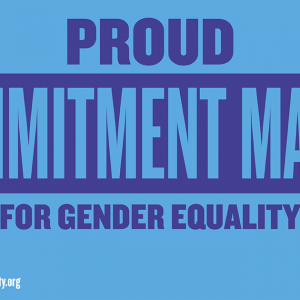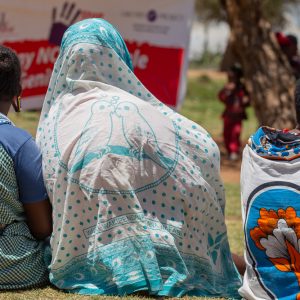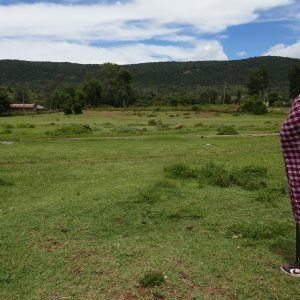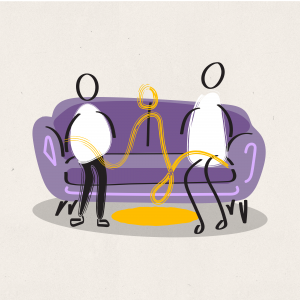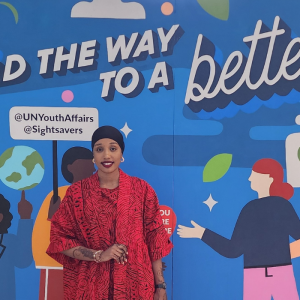Writing a case study is a fantastic way to amplify your work and the impact it’s having in communities. Creating a strong case study requires good preparation, an open approach, good listening skills, and having a key focus that you’d like to highlight. This is a set of guidelines to support activists and community-based organisations working to end female genital cutting (FGC) to gather community members’ stories. Orchid Project would then like to work in partnership with you to amplify these stories, to get the word out about how change can happen.
Below you will find:
- How to prepare for an interview
- Guidance for carrying out interviews
- Guidance for structuring interviews
- Summary – dos and don’ts
All case studies should be supported by a good quality photo/video, if possible. Please refer to our “How To” on taking strong photos and videos for further information.
1. How to prepare for an interview
- Choose the person you’re going to interview: The person you are interviewing and their story will be fundamental to the strength of the case study you produce. Think about who would be the best person to interview: Do they have a story to tell? Do they want to tell it? Do you have an existing relationship with the person?
- Think about the physical space in which you will be interviewing and your impact in the space and those in it: The environment you carry out your interview in may have an effect on your interviewee’s answers. If possible, choose a space that allows the participant to tell their story freely. Try to have women interview women, and men interview men. Consider how comfortable or private the space is. It’s also important to think about how your presence may affect the interviewee, both while you’re there and after you’ve gone. Ensure that you’re adhering to the “Do No Harm” principles.
- Consider how you’ll record answers: The way in which you record the interviewee’s answers may affect what they say. Think about how you might record their answers and engage as fully as possible with them. Can you work with a colleague so one person asks questions and the other takes notes? Could you record the interview on your phone? If you are making notes after the interview, try to do it as soon after you’ve spoken so it’s fresh in your memory. Consider whether the way you’re recording answers could affect your interaction.
- Think about the themes you’d like to focus on: While the case study should be led by the interviewee, think about key themes that you’d like to highlight. Are human rights an important theme in your work? Health? Youth? Consider what you’d especially like to bring out in this case study, and use this as your focus while allowing the interviewee to take the lead.
2. Guidance for carrying out interviews
- Create a rapport with your interviewee: To get the best out of your interviewee, it’s important to create an environment of trust, so they know you respect and appreciate them sharing their story. Let them know who you are, what you’re doing, why you’re doing it, what will happen with this case study, and that this is an informal conversation. Have a general conversation to open up the discussion. Let them know that anything they want to share is relevant and this is a space for them to tell their story. It’s also important to think about how your body language may affect the interview. Make eye contact and keep your body language relaxed, professional and open.
- Ask open questions: Allowing the interviewee to lead the discussion is fundamental to the strength of your case study. Ensure that you are asking open questions, and not leading the interviewee’s answers. For example, a closed question might be: “Are girls getting married too young in your community?” One way to ask this as an open question is: “What kind of issues are there in your community about the age that girls get married?” To practice asking open questions, take a look at Orchid Project’s activity on asking open questions on our website.
- Let the interviewee lead the conversation while keeping your themes in mind: It’s important that the story you produce is true to the interviewee’s experience. There is no “good” or “bad” information to collect. Listen carefully to what the interviewee is telling you and follow up on specific things. For example, in a case study focusing on traditional practices, you might ask: “What issues do you see for the young girls in your community?” If they responded, “Girls in my community are cut when they’re 10 years old, and then they’re considered ready for marriage.” You might follow up this response by asking “How do these issues make you feel?” and “If you were going to make any changes, what would they be?”
- Ask questions about change: A strong case study typically shows whether the interviewee has seen or experienced a change in their views, attitudes or behaviours. You might ask, “Have you noticed or experienced any changes since coming to community dialogues?” It’s important to dig into what that change might mean to them and whether they will share it. Consider how you might ask follow up questions to understand how the change came about, and what could happen as a result.
- Let them know the outcome of the interviewee and how you can follow up with them: Sharing our personal stories can be a big deal, and it’s important for the interviewee to have ownership of their story. Let the person know how you plan to share the case study with them, and if/how it could be publicly shared. It’s very important that the interviewee gives “Informed Consent” – this means they know their story, with their consent, could be shared on your/Orchid Project’s website, in press and media, on social media, print materials and in email communication. Take a look at our Consent Form for more information. Also, let them know they can remain anonymous while still publicly sharing their story.
3. Guidance for structuring your interview
A strong case study should include: information about the context in which your interviewee lives; their engagement with your programme or activities; whether a change has occurred; whether the individual has taken action as a result; and if/how the individual will be supported going forward. Include direct quotes from the interviewee where possible, to bring the case study to life.
Below is a suggested structure for your interview, however you are the expert in your context, so decide the structure and questions that you believe will work best. The following structure can also be a useful guide when writing up your case study.
1. Introduction: Create a rapport with the interviewee.
1.a. Let them know who you are, what you’re doing, why you’re doing it, what will happen with this case study.
1.b. Let them know it’s an informal conversation. Have a general chat to open up the discussion. Let them know that anything they want to share is relevant, and this is about their story.
2. The context: This tells us about the setting in which the community member lives. It’s important to let them know that they can remain anonymous.
2.a. Individual context: Name, role in their community, ethnic group, marital status, whether they have children
2.b. Location context: Name of community, predominant ethnic group, the livelihood of the people in the community, traditional practices (if appropriate), how many people live there, urban or rural.
3. Engagement: This section aims to capture why they have chosen to take part in activities and whether they’ve re-engaged with your programme.
3.a. Why have they taken part in the programme activity?
3.b. If they have taken part in multiple activities, why did they decide to come back?
4. Change: This tells us if their engagement with activities has had an impact and whether their individual attitudes or community attitudes have shifted.
4.a. Have they noticed any change as a result of the activities, at an individual level?
4.b. Have they noticed any change as a result of the activities in the community?
5. Sharing: This gives information about how the programme’s impact might reach others in the community.
5.a. Have they spoken to anyone outside of programme activities about topics that came up?
5.b. Which topics have they discussed with others, if any?
5.c. If relevant, who have they spoken to about programme activities and why?
6. Continued support: This section lets us know how you might continue to engage with this person.
6.a. How they can be supported to continue their journey/story of change?
4. Summary: Dos and Don’ts
Having read these guidelines, we hope you feel well prepared to work with your programme participants to collect strong case studies that show the impact of your work. To summarise, we’ve put together some “dos and don’ts” as some quick reminders to help you.
| Dos ✅ | Don’ts ❌ |
|
|
Thank you. This is a “living, breathing” guideline, and we welcome your feedback on an ongoing basis as to whether this is helpful, and how else Orchid Project can support you to gather case studies.
You can also download this guideline as a pdf, here.
If you have any feedback, please reach out to our Communications Team by emailing miranda@orchidproject.org or to our Programmes Team by emailing lola@orchidproject.org.

